The front derailleur is under attack from multiple angles. In the mountain bike world, SRAM aggressively sought to kill it off, and eventually, rear cassettes offered enough range that they won the fight.
Things remain murkier in the drop-bar game. The front derailleur is slowly losing favourability on gravel as gearing ranges with 1x grow, as does demand for more tyre clearance that losing the front derailleur can help afford, plus the general simplicity of 1x is advantageous. For road, 1x gearing has niche interest for its aerodynamic benefits and, in some cases, more efficient running through larger cogs.
Still, it’s hard to deny that 2x front-shifting benefits certain applications. It’s an efficient way to achieve a wide gearing range. It offers a quick jump between two very different gear ratios. The humble front derailleur also means we don’t need the weight of dinner-plate-sized rear sprockets, the wide gear jumps they bring, or the lengthy derailleur cages required to use them.
So what if you could combine the benefits of 2x front shifting with the simplicity of 1x? That’s exactly what Classified sought to do with its Powershift two-speed rear hub that meshes with your choice of 11, 12 or 13-speed rear derailleur. After nearly three years in the market, this stealthy product is gaining some traction.
At Escape Collective, Ronan Mc Laughlin and I have used the Classified system extensively across road and gravel bikes. So how does it work? What are the downsides? And who’s it for? All of this and more in this detailed review.
The short of it: A two-speed internal geared hub that intends to be a better alternative to a front derailleur.
Good stuff: Works incredibly well with lightning-fast and ultra-reliable shifting; impressive compatibility and ease of fitment.
Bad stuff: Separate shifter button feels like an add-on; heavier than a premium 2x gearing setup; cost; potential minor efficiency loss in the easy gear; bearings are not user-serviceable.
Classified, in a hubshell
Founded by engineering brains with experience in automotive transmissions, Belgium-based Classified launched in 2020 with its Powershift hub system. This hub system is intended for road and gravel bikes, and is the focus of this review. It’s also worth noting that Classified recently released a subtly modified version for mountain bike purposes, and surely has plans to expand the product range from there.
While not the first with such a concept, Classified’s Powershift system combines an internally geared hub with a traditional rear derailleur and cassette. The road and gravel version will only fit common 142 x 12 thru-axle and disc-equipped bikes, while the newer mountain bike version only fits 148 x 12 Boost spacing.
The hub is designed to work with existing drivetrains from the major manufacturers. Here, the hub requires Classified’s own 11, 12 or 13-speed cassette to be matched with your preferred shifters, rear derailleur, chain, crankset, and disc-brake system. There is quite a lot of scope for gearing customisation, firstly with your choice of chainring size, and secondly with the cassette size you choose from Classified.
Built into a sealed unit around the rear hub axle, Classified’s planetary gear system (aka epicyclic) conceals two gears. There’s the direct-drive 1:1 gear which sees the six spur-style planet gears locked out and therefore operating like a regular bicycle hub with a gearing ratio matched to the front chainring. Shift the system, and the planetary gears are unlocked to produce a 1:0.686 gear (for brevity, I’ll reference this as the .7 gear), something that’s designed to approximate the gear jump equivalent to the smaller ring on a regular 2x crankset.
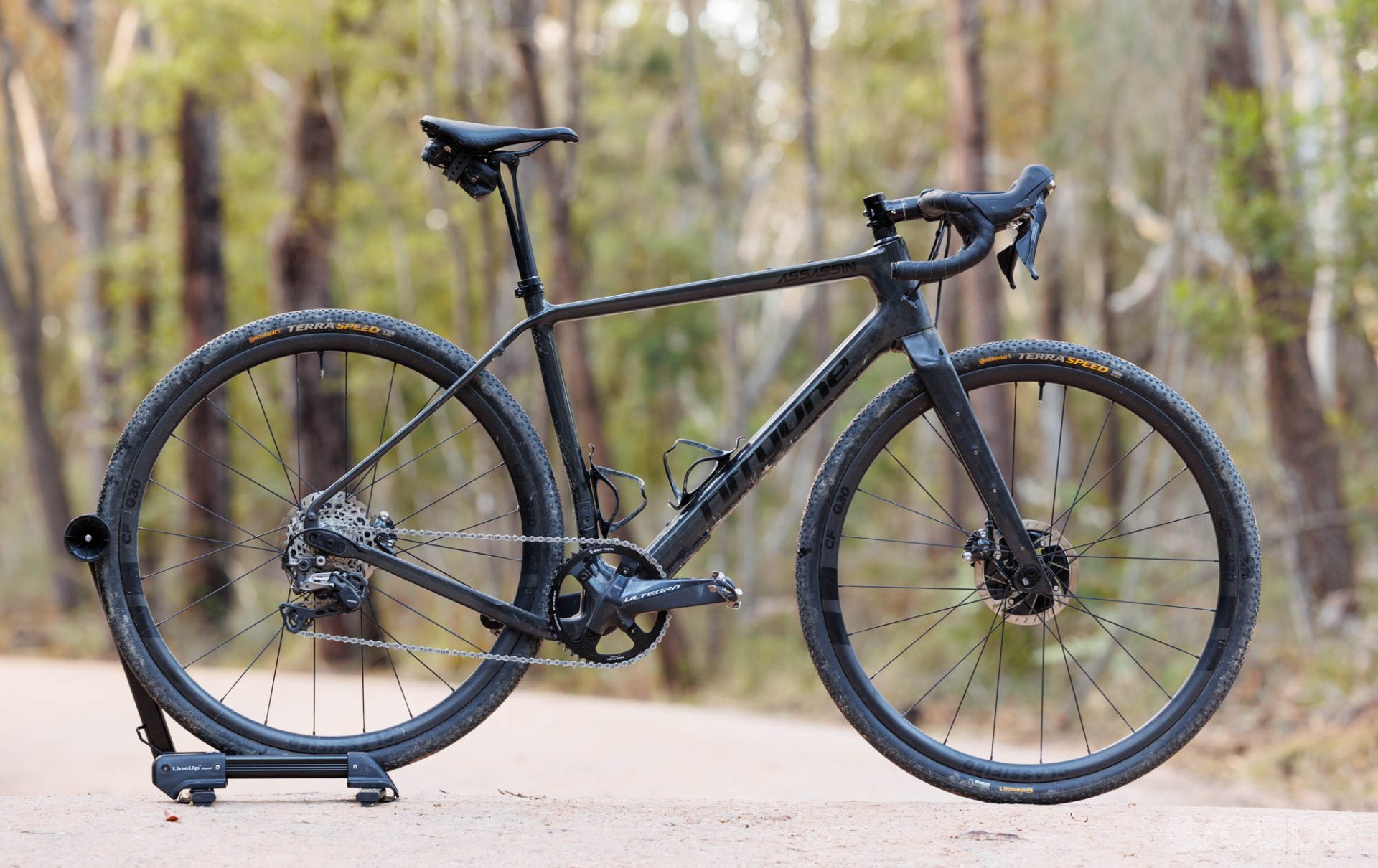
For example, engaging Classified’s planetary gear will turn a 46-tooth chainring into an effective 32T. A 52-tooth chainring is then geared equivalently to a 36T. And a 50T becomes a 34T.
The ratio difference best replicates the 16-tooth jump of Shimano’s 2x road cranks. And in this scenario, you can run a single chainring equal in size to your preferred road big ring along with a matching cassette size, and retain all the same ratios.
Meanwhile, gear ranges tend to be wider on the latest gravel bike groupsets from Shimano, SRAM, and Campagnolo. I’ve been running the Classified system on a gravel bike with an 11-34T cassette and a 46T chainring. Including the two-speed Powershift, this provides a 451% range. By comparison, this personal bike was previously equipped with Shimano GRX in a 1×11 configuration using a 42T chainring and 11-46T cassette that afforded a 418% gear range. Meanwhile, you could compare it against a Shimano GRX 800-series drivetrain in a 2x configuration with an 11-34T cassette and 48/31T chainrings that provides a broader 479% total range.
Want more range? Classified recently released an 11-40T cassette for 12-speed users. This provides a whopping 531% range that’s even wider than SRAM’s Eagle ‘Mullet” 520% offerings (10-52T cassette), and the Classified achieves that wider range while offering closer steps between the cassette cogs.
The hub switches between the two gears with Classified’s own wireless shifter that lasts over a year on its small coin battery (CR1632). The wireless receiver, along with a Micro-USB rechargeable battery that lasts between 3-6 months of riding between charges, is built into the handle of Classified’s own rear thru-axle for an impressively clean and easy setup. The thru-axle (receiver) and shifter (transmitter) are the only electrical components; the Powershift unit itself is entirely mechanical.
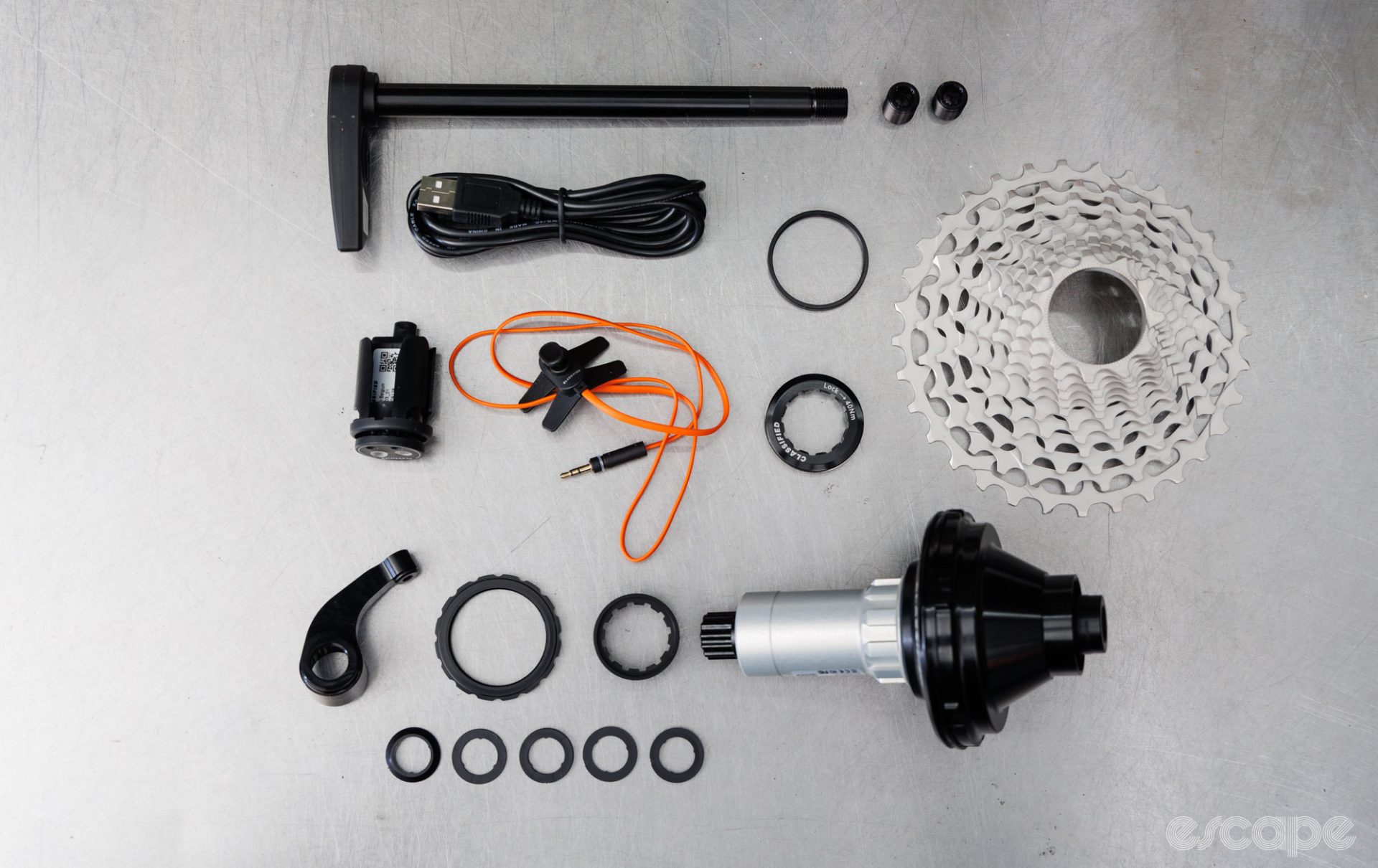
As you may expect, the Powershift hub is unlike anything else. The axle, bearings, planetary gear system, and freehub all sit as a single integrated – and not-user-serviceable – unit that’s claimed to be maintenance-free (I’ll come back to this!). That unit is then affixed into Classified’s open-bore hub shell with a common cassette lockring tool. Such a modular design means you can own multiple different Classified-compatible wheelsets and only one Classified Powershift system, or in the event of servicing, you can merely send back the sealed unit and not the whole wheel.
Initially, the system was only available in complete bikes or with one of Classified’s own carbon wheelsets (again, tested here), but options have grown greatly. You can get Classified’s hubshell pre-built into wheels from Enve, Hunt, DT Swiss, Mavic, Fast Forward, Reynolds, Light Bicycle, Parcours, Vision, Boyd Cycling, Noble, Spinergy, and many more. You can also get the hub alone (with or without the Powershift unit) to build into any rim you choose, assuming it has 24 holes.
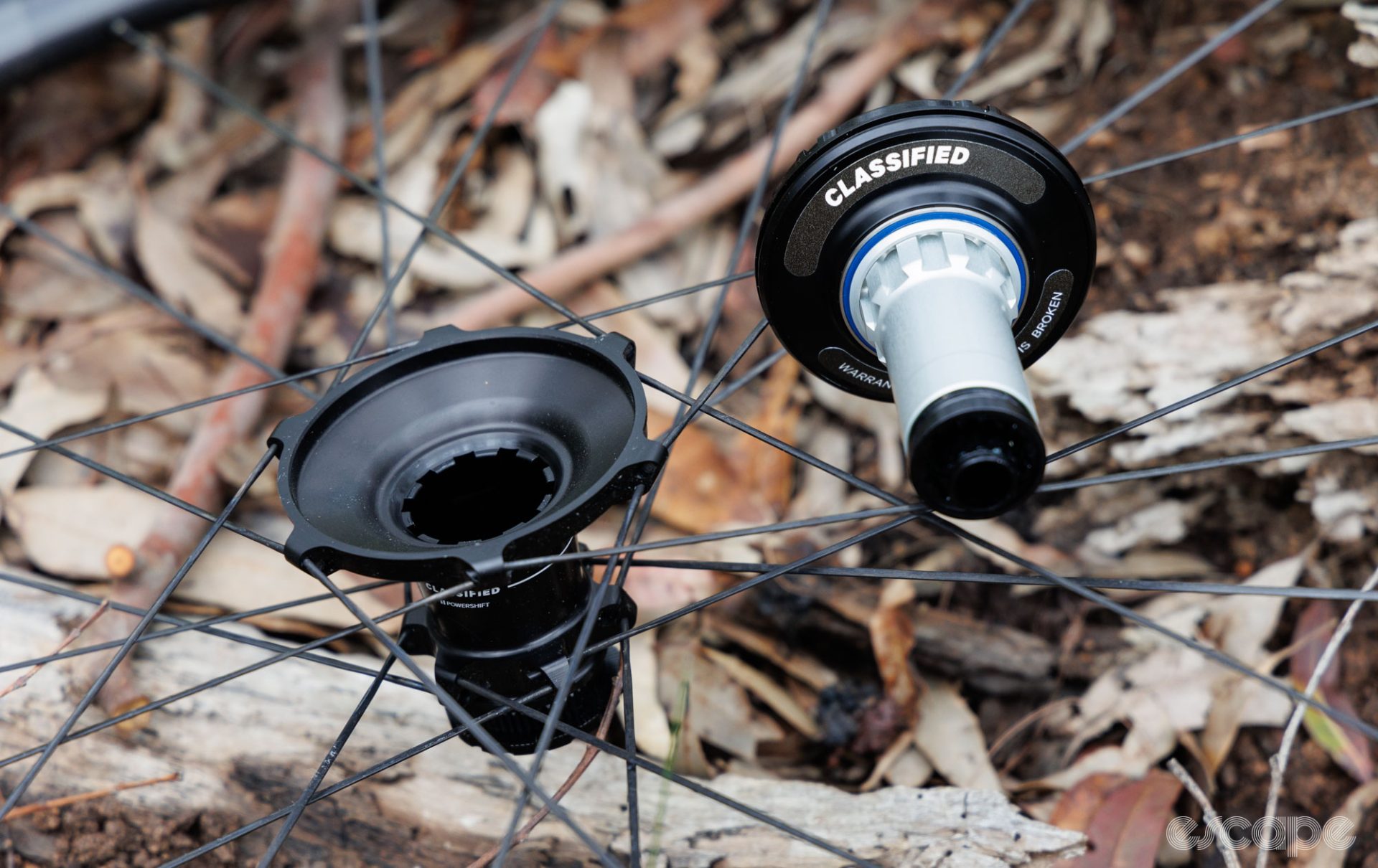
Classified is intended to be a high-end product and the pricing sure reflects that. As tested, you can purchase the entire Classified hub system (including the cassette, shifter, thru-axle, and other small pieces) built into a pair of the company’s own brand of carbon rims for US$3,000 / €2,600 / AU$4,700. If you buy a Classified-compatible wheelset from one of Classified’s partner wheel company’s, you’ll then need to add the Powershift system (US$1,500 / €1,300 / AU$2,350). Or alternatively, you can buy the Powershift system, including the rear hubshell, for building into a wheelset of your choosing; this option will set you back US$1,600 / €1,400 / AU$2,520. UK pricing is TBC.
Weight and efficiency
Ok, before I go any further, let me cover two rightfully common questions about the Classified system.
Figuring the specific weight difference can be tricky business as it’s not ever an apples-to-apples comparison. For example, the Powershift may do away with the front derailleur and front chainring of traditional 2x shifting, but it introduces a new rear hub, a new cassette, a new thru-axle, and another shifter. It’s easy to get caught up in the nuances of this, such as how much you’ll save with the shorter spokes from Classified’s larger hub flanges, what your current thru-axle weighs, and what parts you will and won’t be keeping.
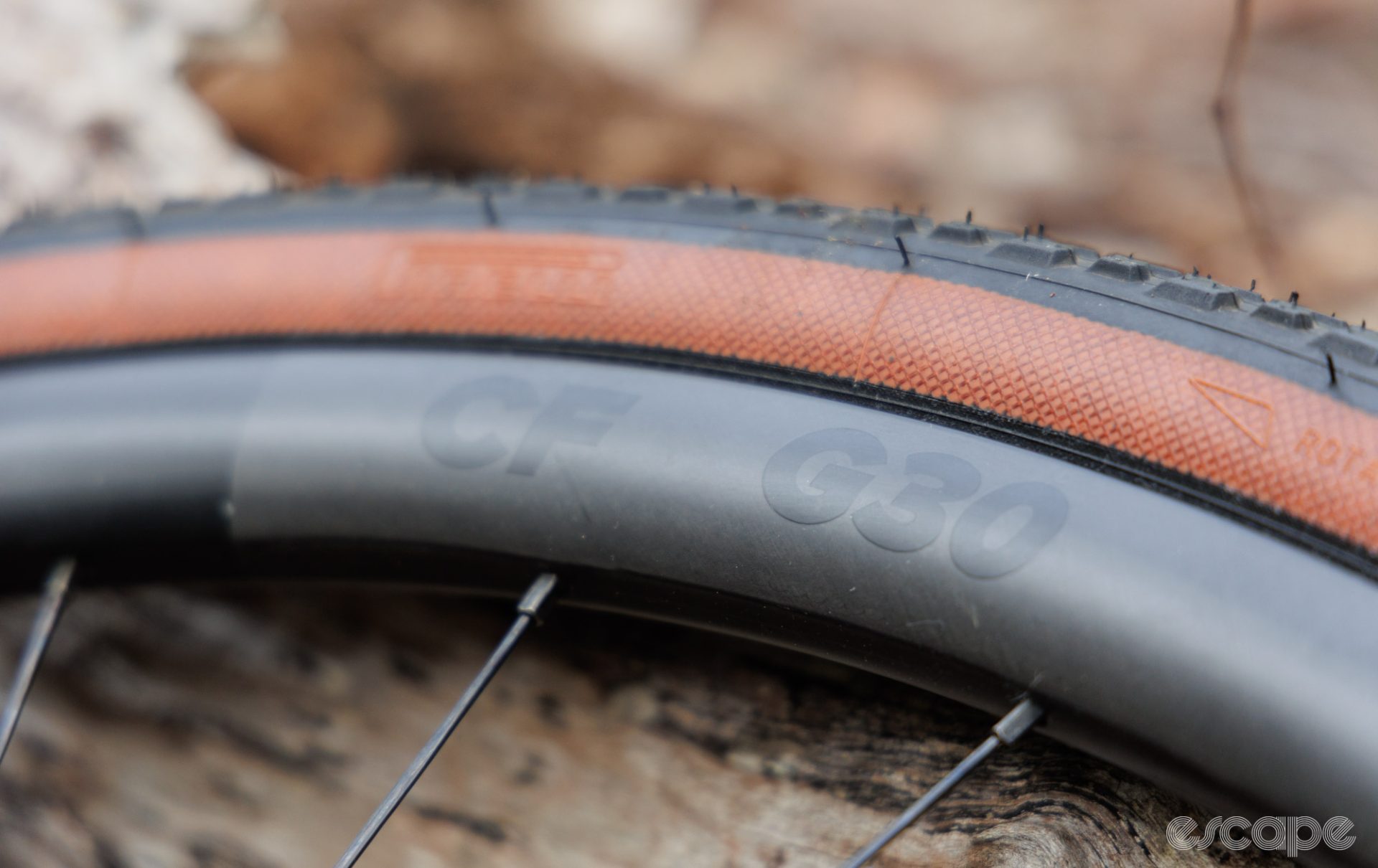
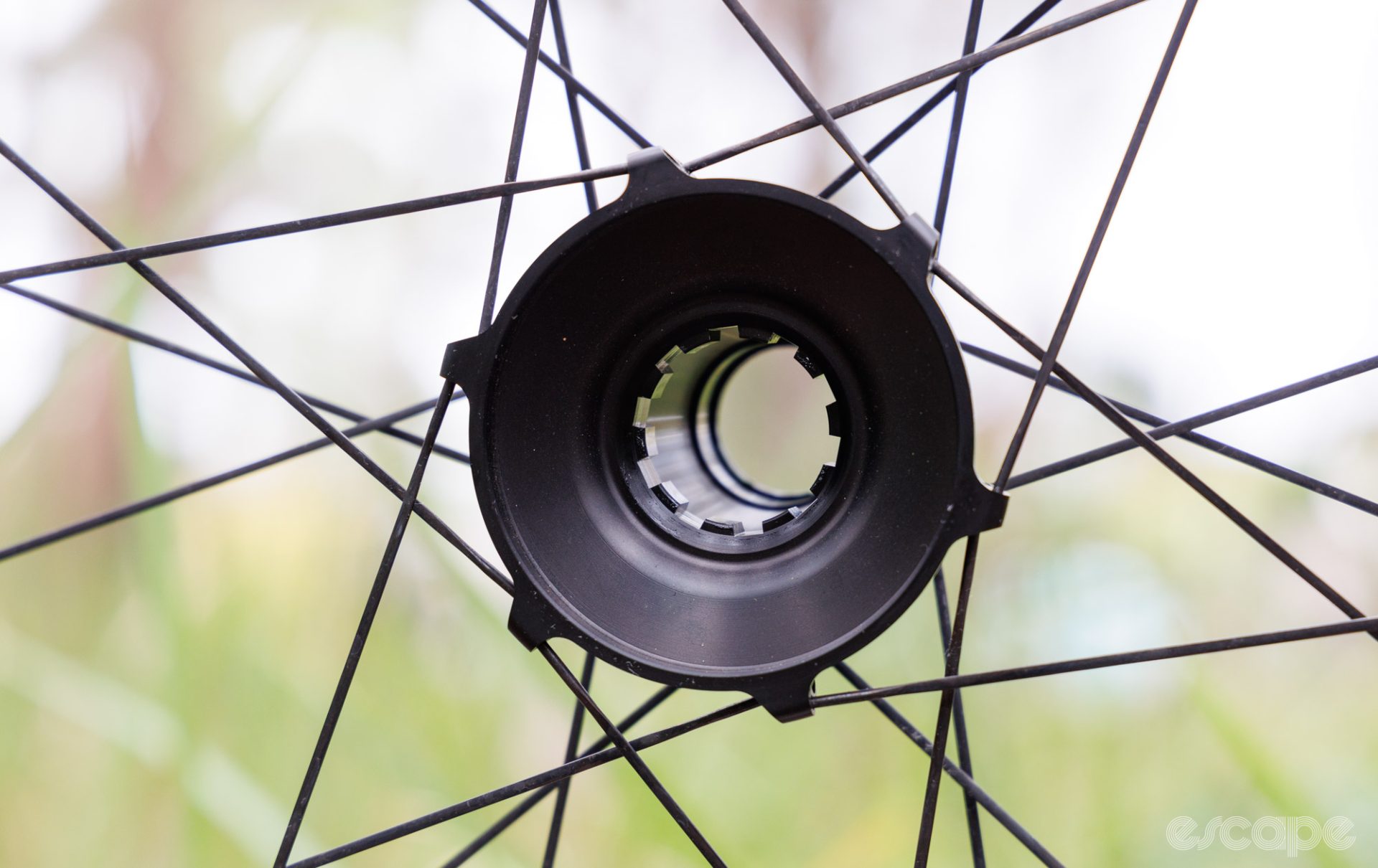
According to Classified, a Shimano GRX Di2 bike (in 1x configuration) equipped with its system weighs equal to a 2x Shimano GRX Di2 bike running a DT Swiss 350 hub. My experience is a little different.
Nuances aside, my experience is that it’ll typically add weight, especially if put against more equivalently priced Dura-Ace or similarly high-end components. My gravel bike was initially set up with Roval Terra CL wheels, Shimano GRX 812 rear derailleur, Shimano XT 11-46T cassette, and a Wolf Tooth 42T chainring. In this configuration, the bike weighed 9.12 kg with Continental Terra Trail tyres in a 40 mm width (including pedals and saddle bag).
The following list offers a full breakdown of the tested component weights:
- Classified G30 bare rear wheel with tape and valve – 746 g
- Classified G30 front wheel with tape and valve – 762 g
- Powershift Rear hub system with torque arm – 508 g
- Classified 11-34T 11-speed cassette – 210 grams
- Classified thru-axle – 72 grams
- Wireless shifter unit – 12 grams
- Sprint shifter wire / trigger – 9 grams
With the Classified system fully installed, including marginally lighter Continental TerraSpeed tyres in a 40 mm width, my bike weighed 9.47 kg. Yes, a somewhat obvious weight gain that can be largely attributed to the heavier wheels from Classified versus the 1,410 g pair of Roval Terra CLs they replaced. Classified makes back a bunch of grams with its impressively light machined steel cassette, but it’s impossible to hide the 508-gram weight for the Powershift unit.
Ok, weight is one thing, but what about efficiency?
As you may expect, Classified makes some arguably bold claims for how its system is more efficient than alternative 1x and 2x setups. In addition to the aerodynamic benefits of losing the front derailleur in a conventional 2x drivetrain, Classified states its system earns efficiency by keeping you in the larger chainring that reduces chain wrap. Meanwhile, Classified also claims that you’ll use its shifting far more than you would with a front derailleur, and therefore avoid cross-chaining losses.
“The hub does not have any additional losses on in the 1:1 ratio, and is designed to have extremely low losses in the 0.7 ratio which are completely balanced out by the big chainring and straighter chainline by using a Classified setup,” reads Classified’s own sales materials.
Speaking with an industry expert on the topic who wished to remain anonymous, there is some truth to Classified’s claims, but there are unavoidable small losses in such a planetary gear system when it’s unlocked and geared down.
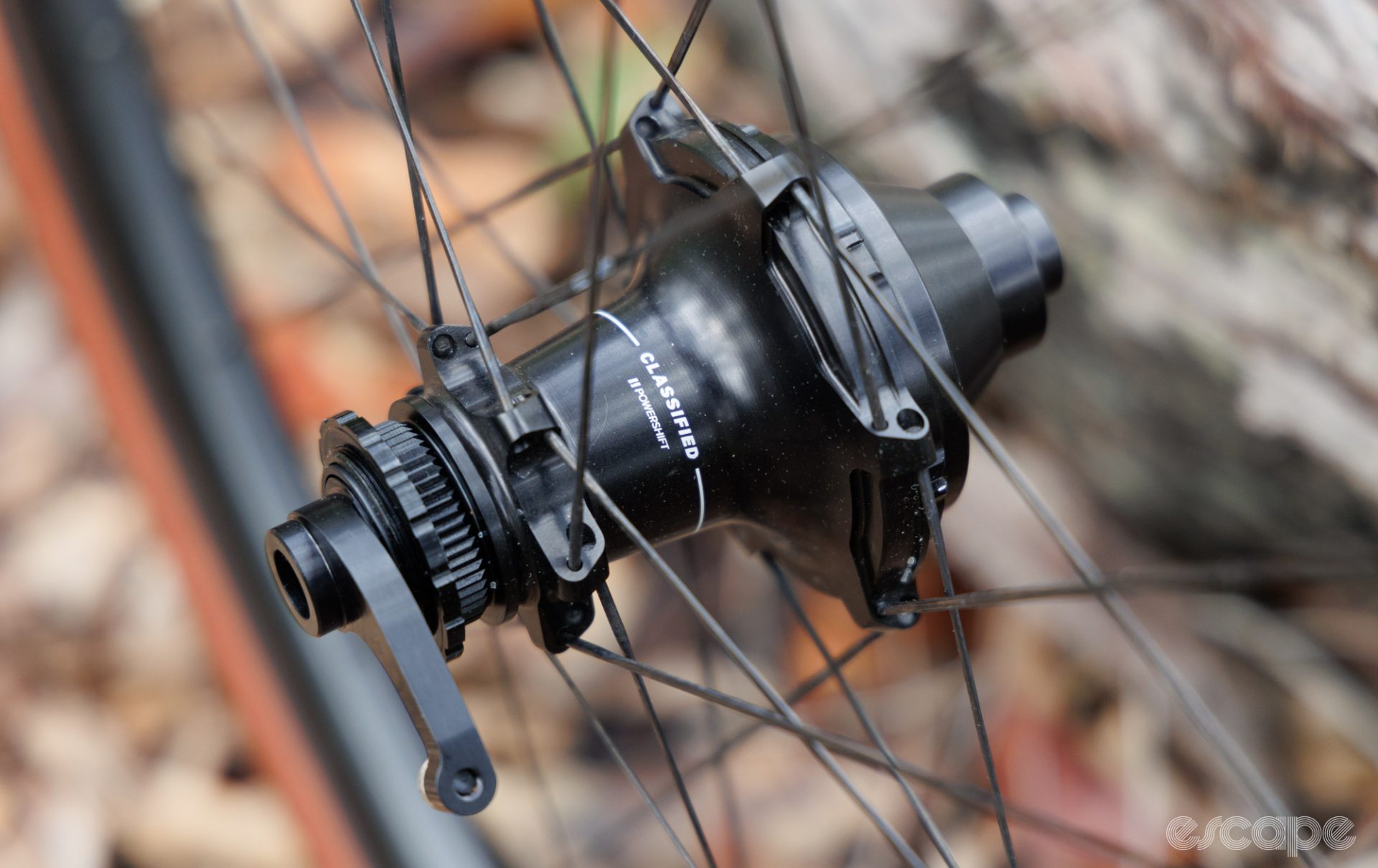
Ok, so if we take a broad assumption that all bearings and hub seals are equal (they’re not), then the Classified hub is indeed equal in efficiency to a traditional drivetrain when run in its 1:1 ratio. In reality, Classified’s system is rather well-sealed and will experience some negligible bearing losses compared to a high-end conventional hub running light contact seals and a low viscosity grease.
As for when it’s geared down in the .7 gear, this anonymous expert suggests the hub efficiency, would be between 95-98% efficient, but certainly no better than 98%. Or in other words, and in a best-case scenario, at 300 watts, you’re likely losing about 6W through the planetary gears.
Obviously, nobody wants to give up their hard-earned watts. Classified claims it balances out in aerodynamic efficiency, reduced chain wrap, and improved chainlines. While I think there are losses, they’re just perhaps not enough for the masses to ever notice or need to stress about.
Compatibility and installation
Making a front derailleur alternative that’s easily compatible with all modern road and gravel bikes is no small feat, and this is what impresses me most about Classified’s system.
Take the 12 mm thru-axle for example, a key component to the system’s function that still needs to serve as a thru-axle. Here, Classified employs a small number of different-length axles that can each be customised with different thread pitches and a variety of plastic washers to change the shape of the axle head and how far it sits from the frame. Classified has a database for matching thru-axles to frames, or alternatively, they equip their dealers with simple measurement tools.
As mentioned, Classified’s system can only be used with its own cassettes. This is because the planetary gear system is combined with the freehub system in such a way that requires a large cassette connection. Classified’s cassettes are impressively light and high-end, with a single-piece, machined-steel construction not unlike top-tier cassettes from SRAM.
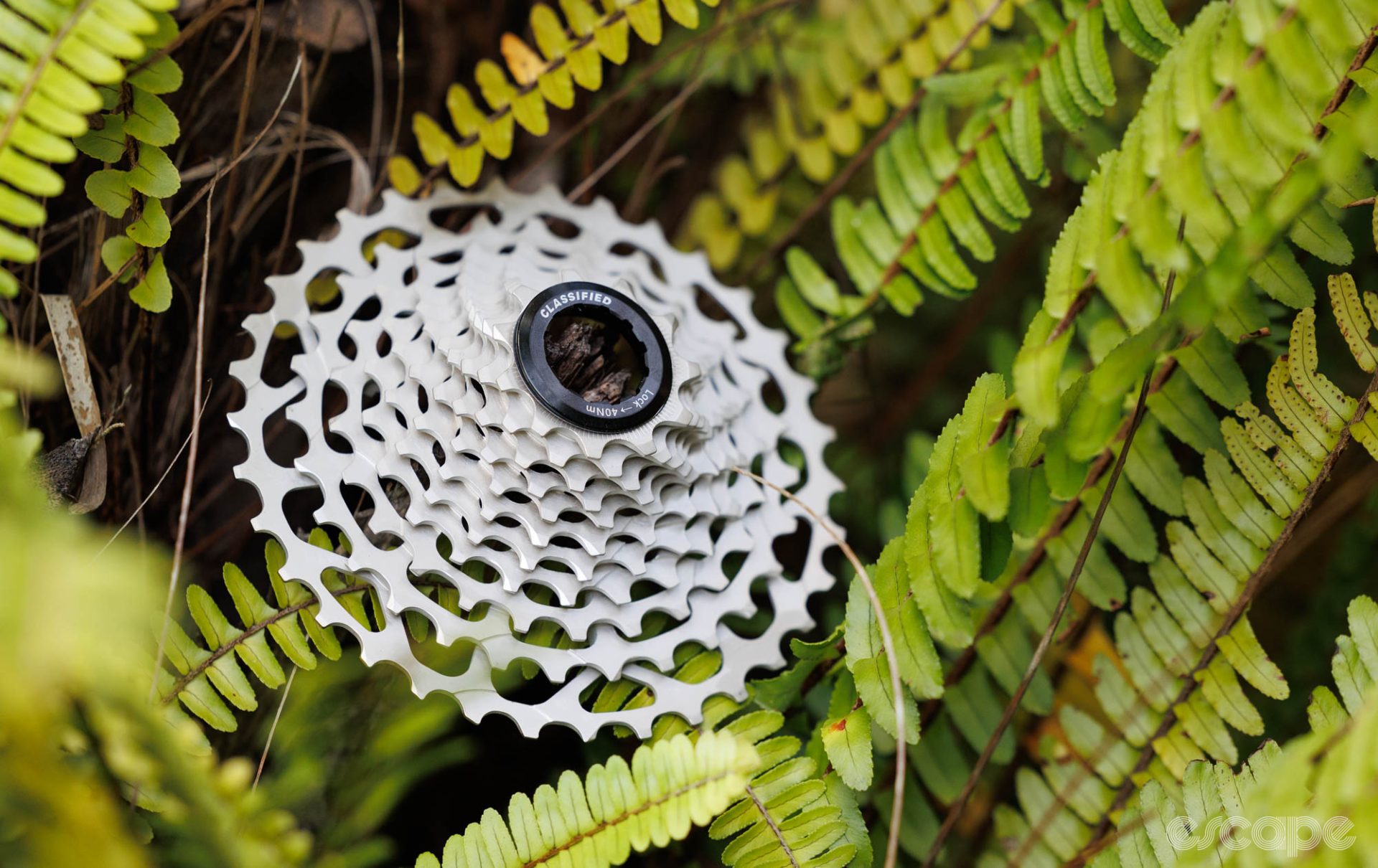
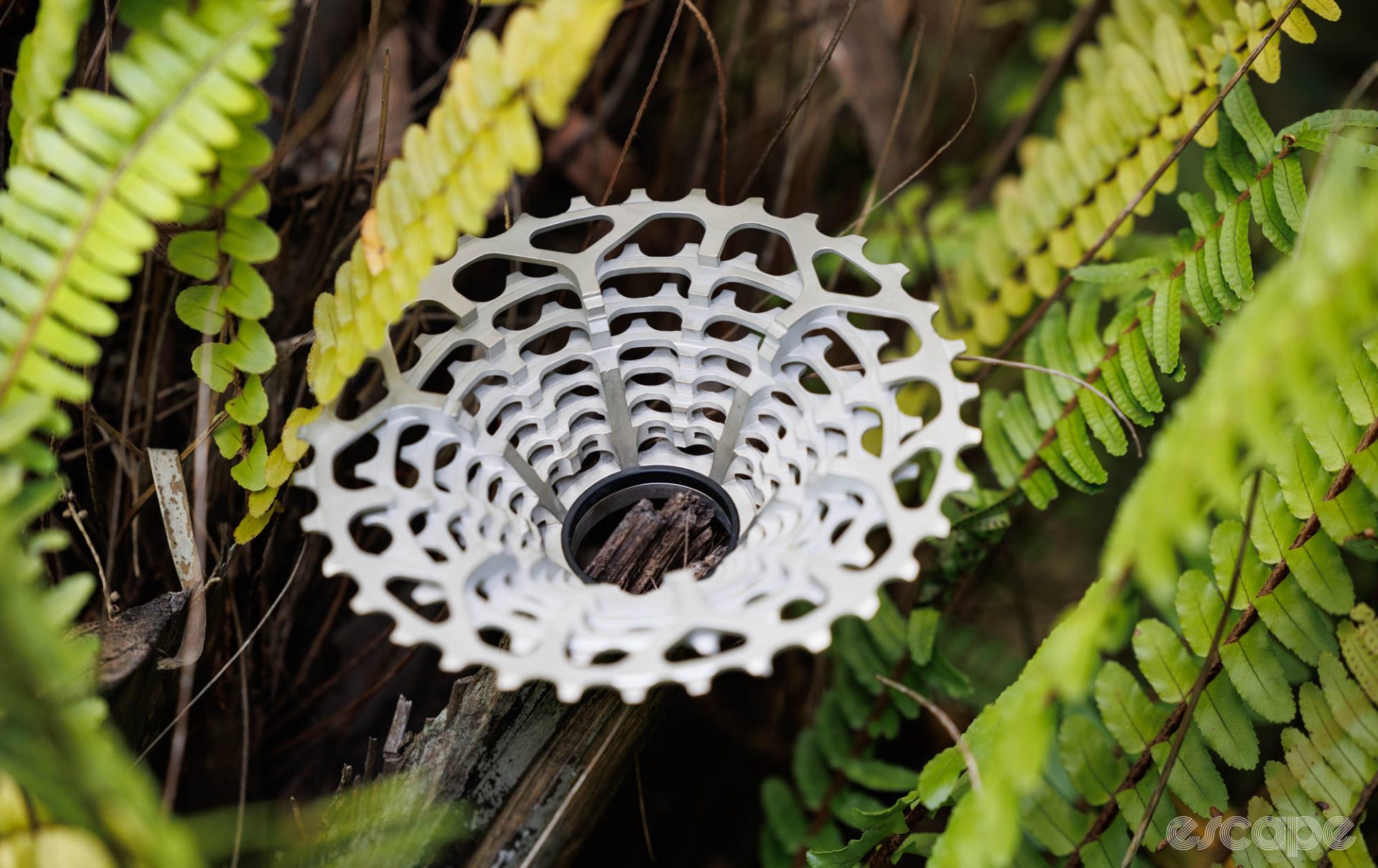
Intended mostly for use with Shimano mechanical and Di2, the 11-speed cassettes are avallable in ratios of 11-27, 11-30, 11-32, and 11-34T.
The 12-speed cassettes are available in ratios of 11-28, 11-30, 11-32, 11-34, and 11-40T, the last one being a new size intended for mountain bikes, but which also works for road/gravel bikes fitted with a suitable rear derailleur. These 12-speed cassettes have a tooth profile that offers surprisingly open compatibility with Shimano Hyperglide+, SRAM AXS Flat Top, and Campagnolo 12-speed chains.
And then there’s Classified’s newest 13-speed cassette, with a 11-36T ratio, intended for use with Campagnolo’s Ekar gravel group.
The hub uses a regular Centerlock disc rotor of your choosing held on with its own external-style lockring. While not claimed to be the same, this design is nearly identical to Campagnolo’s AFS system, and I was able to use a Campagnolo/Fulcrum lockring to secure a rotor.
Classified overcome the rotation of the planetary gear system through the use of an inconspicuous reaction arm (aka torque arm) that merely rests against the head of a flat-mount brake bolt. The adapter that does this simply clicks into place, and self-locates when you install the wheel. It’s certainly an elegant solution compared to bolt-up or washer-based methods employed by some other internal gear hub systems. The only downside is it blocks you from adjusting the rear brake caliper, but that is a minor nuisance that merely requires you to remove the friction-fit reaction arm and reinstall the wheel to do so.
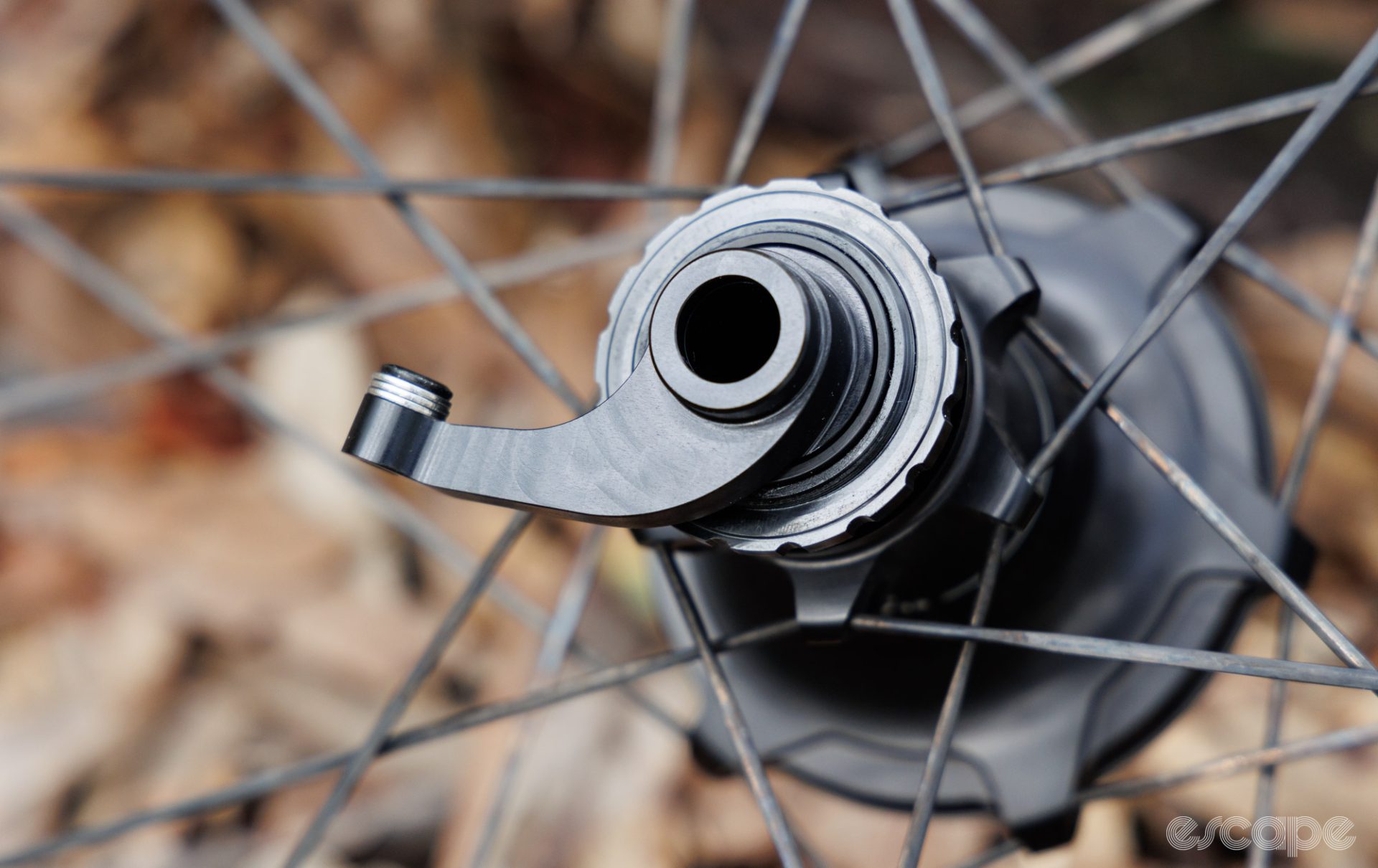

Fitting it all up can be done with a regular Shimano HG-style cassette tool and a common 16-notch, 44 mm external bottom bracket tool (for the disc rotor lockring). It’s all extremely simple, and arguably the hardest part is working out how many washers to use on the thru-axle.
That leaves just the shifter, a piece of the puzzle that’s arguably not quite as integrated as the rest.
At the time of publishing, none of the major drivetrain manufacturers offer direct shifter connectivity to Classified’s system, however, the company says it’s in talks with all the manufacturers on this matter. Classified’s current workaround is its own wired sprint shift button that offers flexible mounting options and then plugs into its handlebar-end wireless transmitter. With its expansion in mountain bikes, Classified also released a wireless ring-trigger designed to sit around a mountain bike’s 22.2mm handlebar clamp area.
The original drop-bar shifter draws inspiration from Shimano’s Di2 sprint shifter, and it too is designed to be mounted somewhere around the top of the drop area. The shift button has a simple adhesive mount, and your bartape then adds further reinforcement to keep it in place. Using a handlebar that offers wire ports for Di2 means you can cleanly run the shifter’s wire into the transmitter and have it all hidden under the bartape.
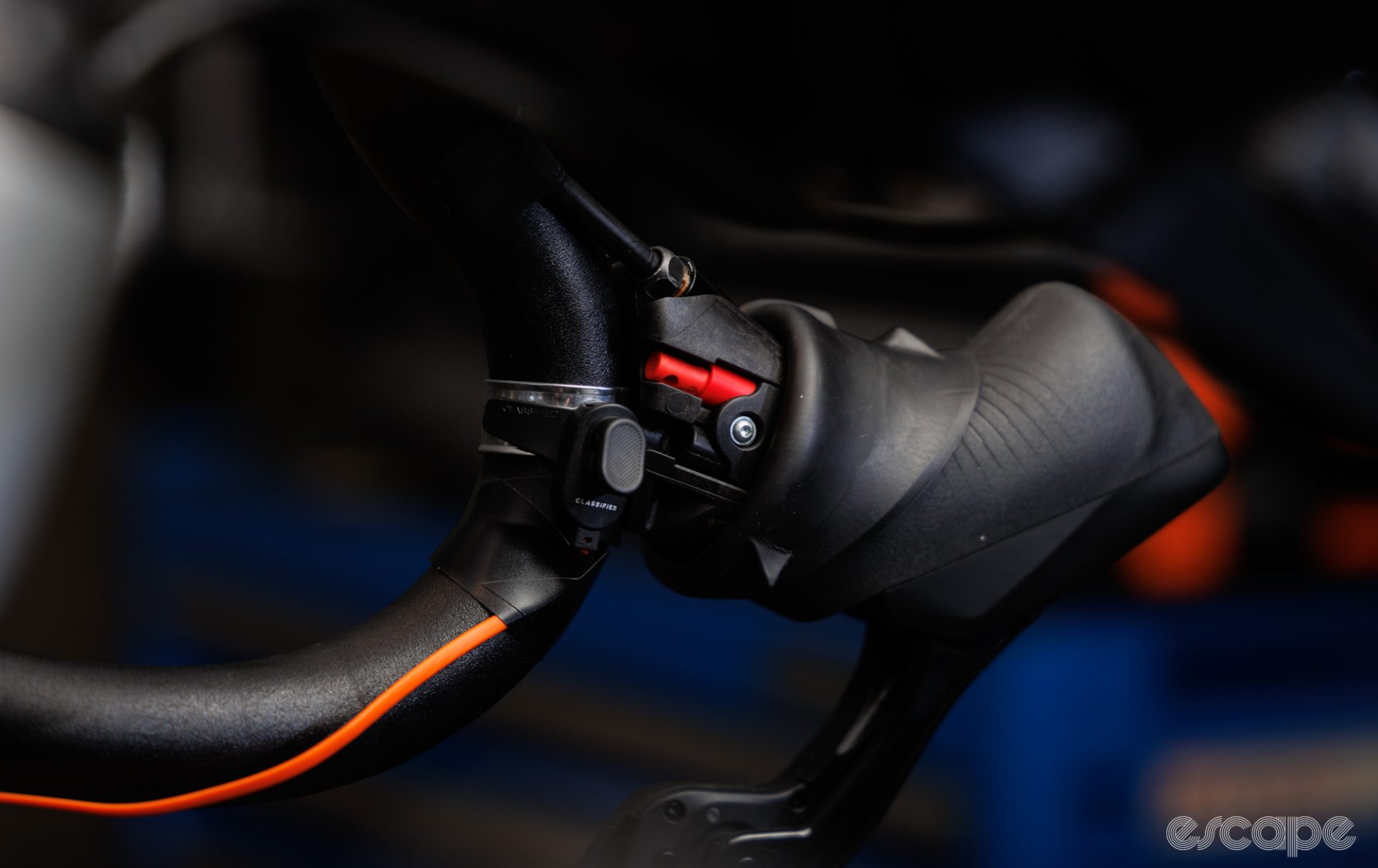
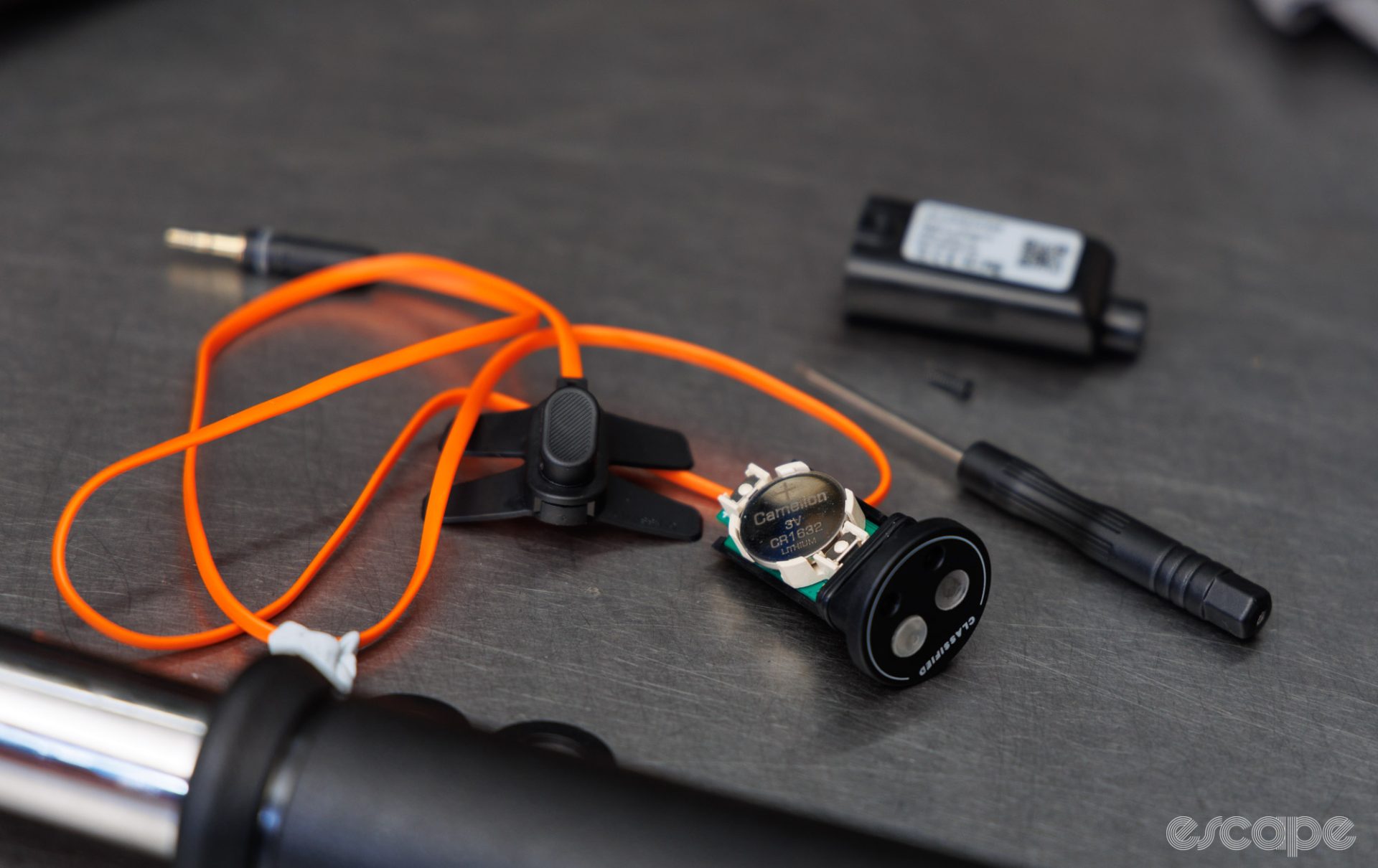
Of course, there are some more hack-like options that come with a loss of warranty. For example, it’s possible to splice a Di2 wire with Classified’s wire, which would allow you to connect an existing Di2 shifter to control the Classified hub. Here’s hoping that Classified’s talks prove fruitful for providing easy integration with popular electronic drivetrains.
Powershifting the Powershift
At my previous place of work I was testing the Classified system on a road bike with Classified’s own R50 wheels. SInce then, I’ve tested the system on a gravel bike with Classified’s G30 wheelset. These gravel-friendly carbon rims feature an 23 mm internal width, 29.3 mm external width, and 29 mm depth.
In its gravel range, Classified also has the G19, an ultra-shallow gravel model that offers a tubeless-only hookless rim with a 25 mm internal width. The company has teased that a more gravel-race version with a 42 mm depth rim will join the line-up soon.
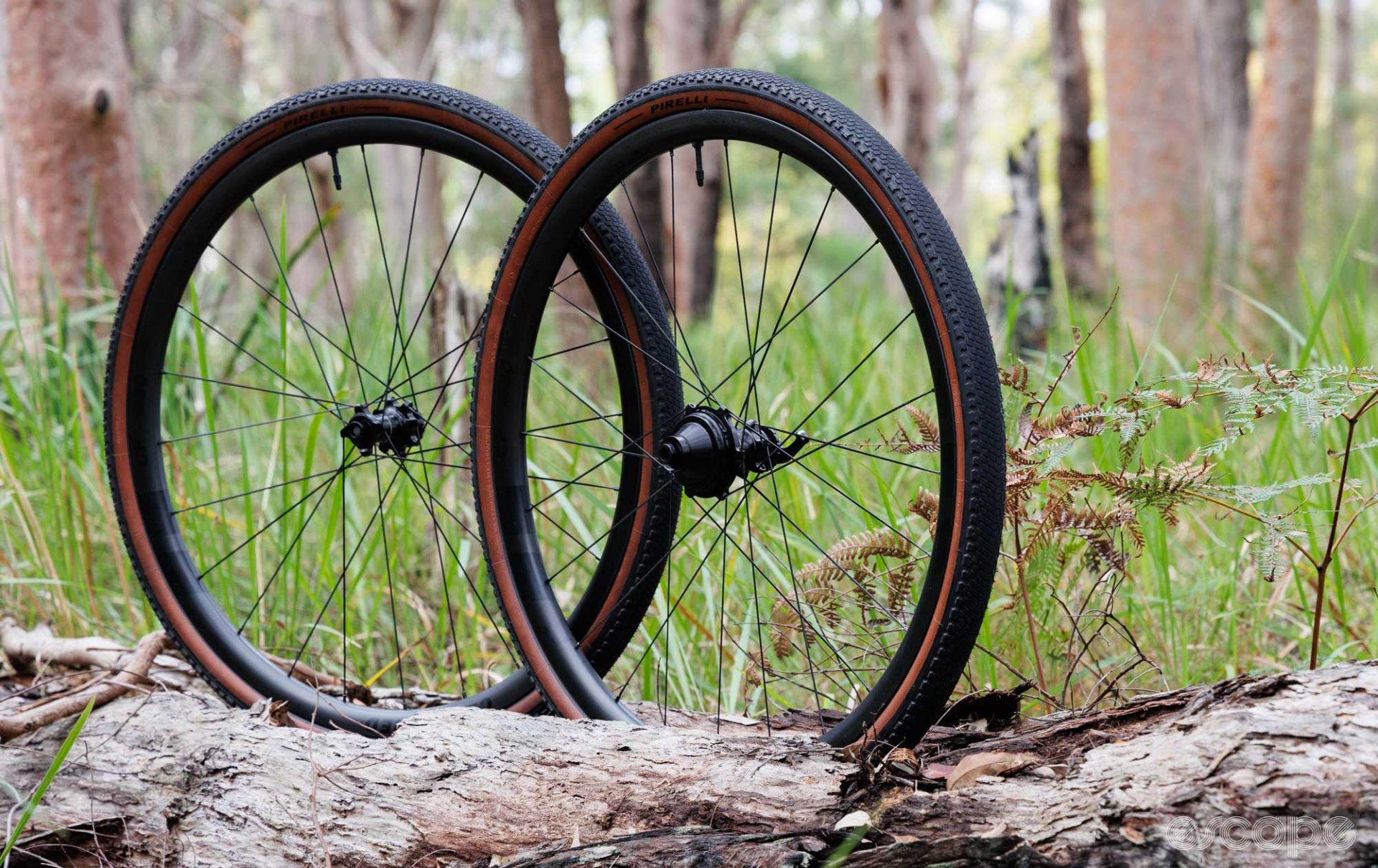
The hooked G30 rim means open compatibility with all clincher and tubeless tyres on the market, and tyre fitment was pleasingly on the easy side with no tyre levers required when installing Pirelli and Continental (often a bear to fit) tubeless tyres. The wheels come pre-taped for tubeless along with nice-quality aluminium tubeless valves. With such easy tyre fitment, setting these up tubeless was an enjoyable and problem-free experience.
Of course, you can now run a Classified system within multiple wheel options. Classified’s own offerings are wholly functional with high-end Sapim CX-Ray bladed spokes and a respectable build quality (good tensions, stayed true, no odd noises), but the rims are also somewhat generic. And as a further caution, Classified doesn’t back its carbon rims with any extensive crash-replacement style warranty that is now common with most carbon wheel offerings.
Ok, so how does it all shift?
Assuming you’ve placed it on the handlebar correctly, then the sprint shifter activates with minimal effort. There’s a subtle tactile feel to pressing it, but I wouldn’t complain if there were a more obvious click to it.
Pressing the shifter button wakes up the receiver in the thru-axle, and from here further presses of the shifter results in an almost immediate change to your gearing and pedal cadence. Classified claims the shift happens in approximately .15 seconds, and I’d liken it to shifting a single cog of a Shimano Di2 rear derailleur – it’s quick.
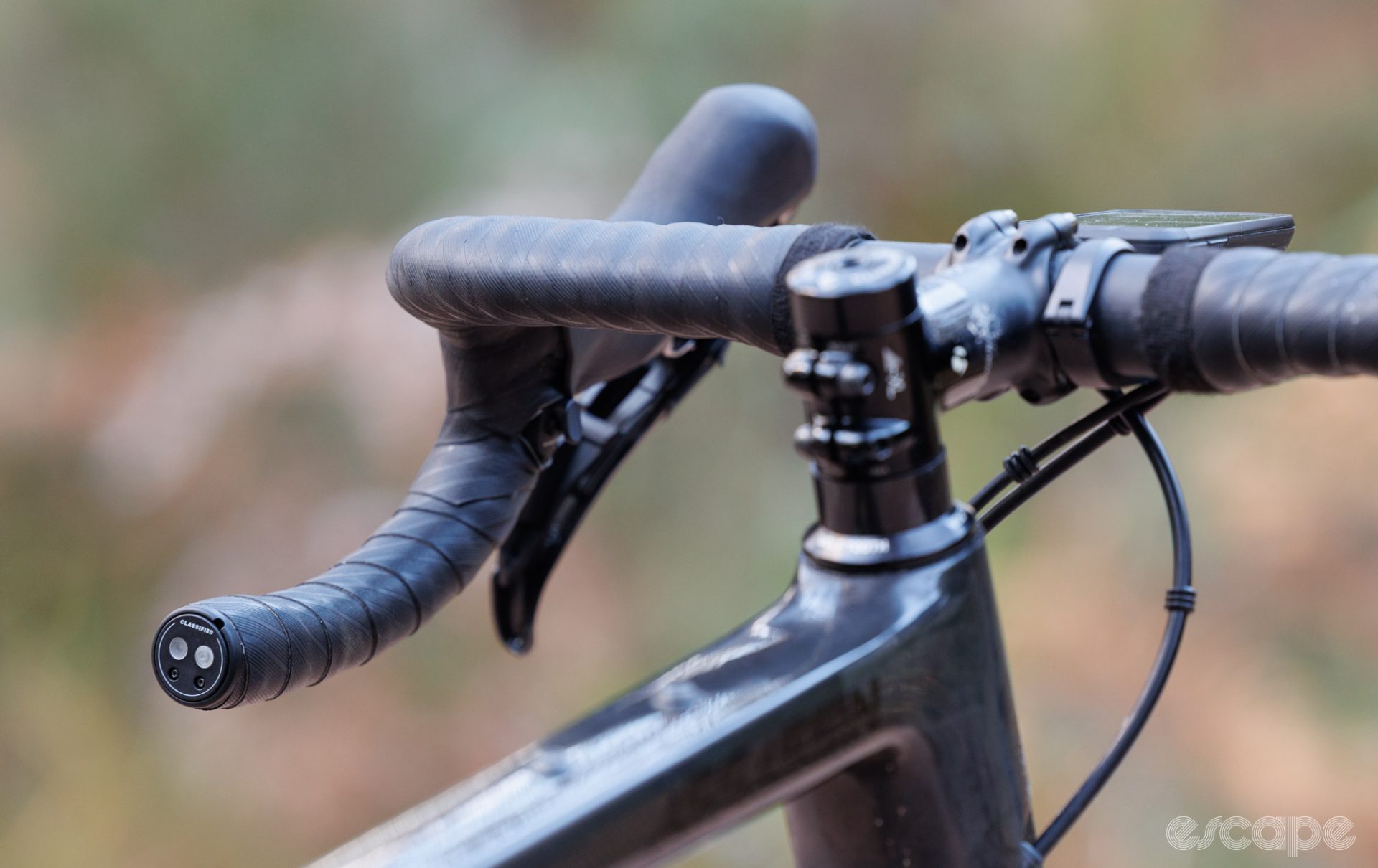
At low power the shifts are remarkably smooth and free of noise in either direction, and the change to your cadence will be the only tell-tale that it’s shifted.
Classified claims that its system can be shifted at loads up to 1,000 watts; my testing supports that. However the more power you put through the pedals, the more the shift will feel like a front derailleur moving a chain across chainrings, albeit without the fear of the chain being thrown or jammed.
Shifting into the 1:1 gear under full power is still incredibly smooth and quiet. Meanwhile, the shifts get increasingly abrupt when shifting down to the .7 gear under heavy load. At around 350 watts this shift to an easier gear feels much like dumping the chain on a Di2 drivetrain, while at double that power output the downshift will start to reveal an audible groan from the system.
Still, regardless of how silly I was with the shifting, it always shifted. Clockwork is a fair cliché to use, and it does this without any fear of damaged drivetrain components or dropped chains. For fellow Escape Collective tech editor, Ronan Mc Laughlin, this worry-free shifting provided a perceived performance gain through being able to hold consistent power without having to back off the power to enact a smooth chainring shift.
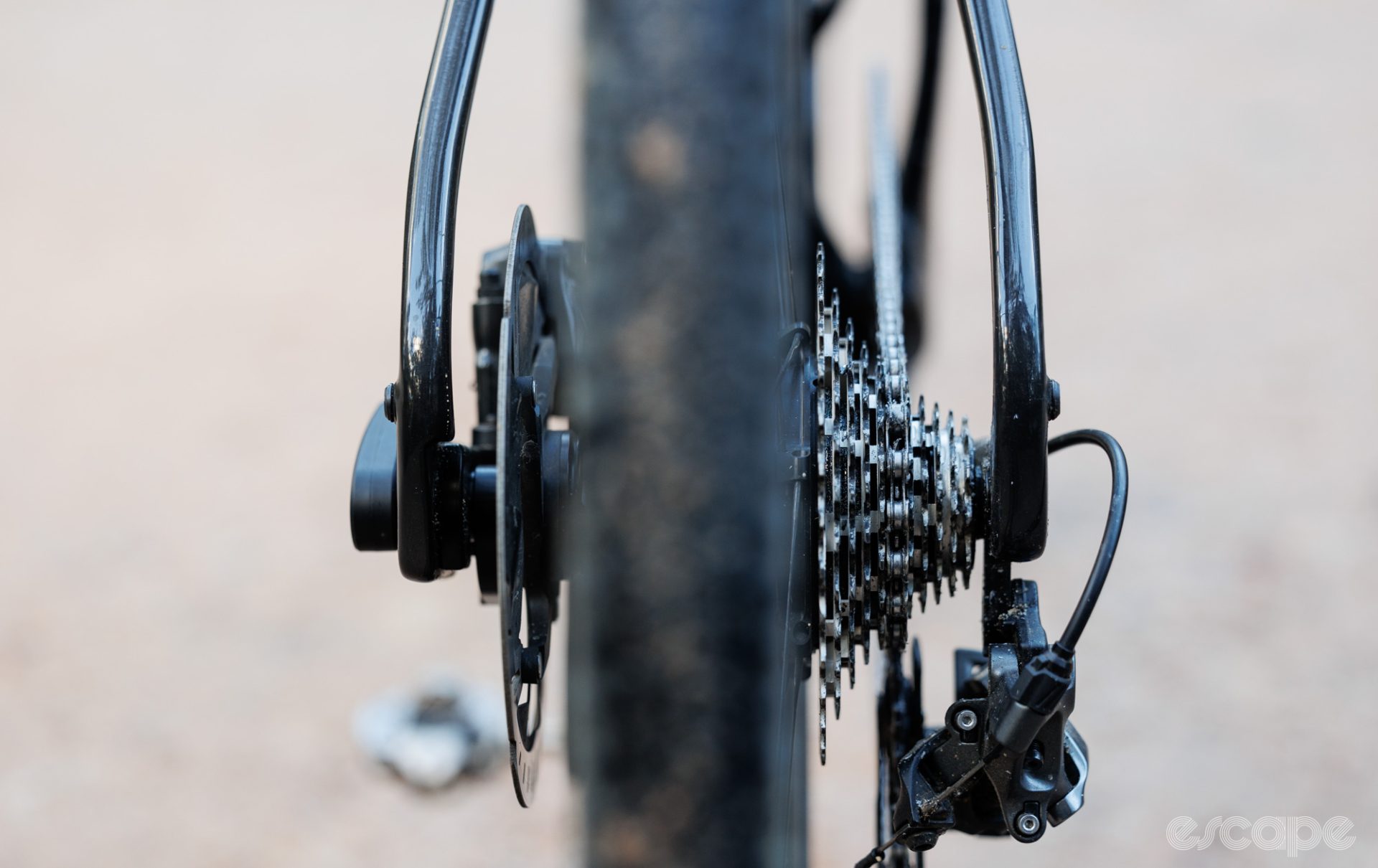
The ability to quickly jump between two such large gear changes offers serious merit on rolling terrain and saves you from desperately working your way through the cassette. Meanwhile those tight cog-to-cog gaps on the cassette allow you to keep a smooth cadence that modern wide-range 1x setups sacrifice.
When in the 1:1 gear the Classified system feels just like its a 1x drivetrain running a traditional hub. Shift to the .7 gear and you can feel something is happening. For me, there is a sensation of losing the directness of drive to the rear wheel, but it’s not enough that I could prove it on a powermeter or would ever blame a subpar performance on it. Meanwhile, a friend of mine briefly rode my bike and quickly remarked that it felt like riding an internally geared hub. Meanwhile, Ronan doesn’t think there’s any discernible efficiency loss and rather points to his use of a 60T chainring feeling like an efficiency win. Either way, noise can be a good indicator of energy loss, and here, I can hear the Powershift make a hushed whir when in the .7 gear, but that noise is only detectable on dead-quiet roads with my focus on nothing else.
The system is remarkably stealthy in many ways and there are race situations where such quiet and hidden shifting could be advantageous to attacking a competitor. Adding to this stealthiness is the relatively quiet freehub mechanism which has you coasting with a traditional clicking that’s most comparable to an older Shimano hub.
That freehub also offers a competitively quick pick-up. There are 40 engagement points (9°) in the 1:1 ratio, with the virtual engagement angle decreasing closer to 6° in .7 reduction gear.
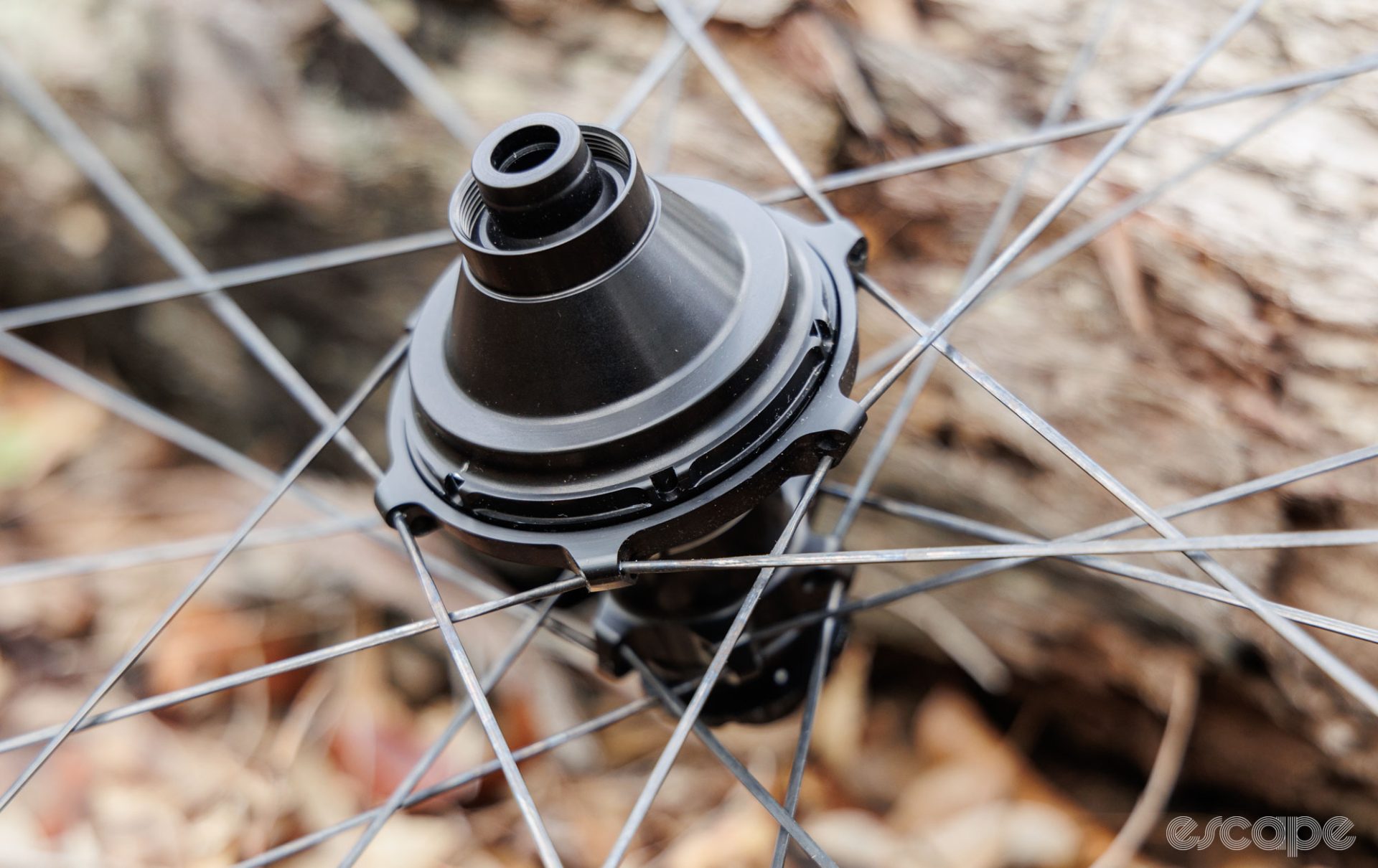
The other side to the shifting equation is that of Classified’s own (and mandatory) cassettes. Here, I found Classified’s 11-speed cassette to shift reliably and run smoothly enough, but those shifts certainly weren’t as buttery compared to running a genuine Shimano cassette. It was a similar story with the 12-speed cassette run with a Force AXS rear derailleur, where again, it was all functional to the point that I’d quickly forget about it, but in a direct comparison, SRAM’s cassette offered smoother transitions between shifts and did so with less noise.
Those familiar with my previous work will know I’m a bit of drivetrain durability nerd, and so I’m not one to abrade through cassettes with a poor choice of chain lube. And while Classified’s cassettes lack some of the fancier coatings that SRAM employ, the hardened chromoly-steel construction should prove to be similarly hard-wearing to something like a Shimano Ultegra cassette. Replacement cassettes cost US$250 / €200 / AU$359.

Room for improvement
Despite all of what it does so well, I didn’t find myself missing it once it was off my bike. In addition to the extra weight it added to my bike, a handful of minor factors have me thinking there’s room for improvement before Classified will earn widespread adoption.
Classified claim its shifting is so good that you’ll use it far more than you would normally shift a front derailleur. I found the lack of true shifter integration to be the obvious limiting factor here, and even after months of use, I still had to think about reaching for that sprint shift button when seeking a lower gear. The ideal would be for an easy integration option with all common shifters on the market, but there are large hurdles to this, especially given the likes of Shimano and SRAM likely deem Classified a growing threat.
Regardless, both Ronan and I agree that Classified’s sprint shifter could be better. A more positive click to the button would certainly help. Or better yet, the wireless ring-style shifter introduced with Classified’s new mountain bike hub offers ideas for drop bar placement. Sure, the sprint shifter can be placed in a number of creative positions, even within a cut-out of your left lever hood, but as long as it remains different to the method of rear shifting, our opinion on this won’t change.

With no visual cue when looking down like a traditional 2x drivetrain I was left wanting a better indicator for what gear I was in. I know that sounds ridiculous, but there were numerous times when I was riding rough and slow gravel terrain, with fatigue in the legs and mind, where I wasn’t sure what gear I was last in.
My ongoing answer was to shift to see which gear I was in (easy to do given the dependable shifting), but on too many occasions, this resulted in a sudden loss of pedalling momentum or being over-geared for the traction-lacking terrain beneath. One solution is to link the Powershift unit as a wireless shift unit to a new GPS head unit, but here’s the kicker, the head unit will only ever show you data from one connected shifting device, and so you’ll need to forgo having your rear shifting data displayed (and collected!) if you want to see the tiny two gears of the Classified.
Perhaps I’m getting too nit-picky, but I also wanted more leverage length of the thru-axle handle while feeling nervous about cranking down on the plastic case that housed the electronics. There’s also the minor fear of smashing it against something, although it is rather low profile compared to many other handled thru-axle designs. And as an added nuisance, I did experience a few of the plastic washers staying attached to the frame dropout when removing the thru-axle – so watch out for that to avoid losing them.
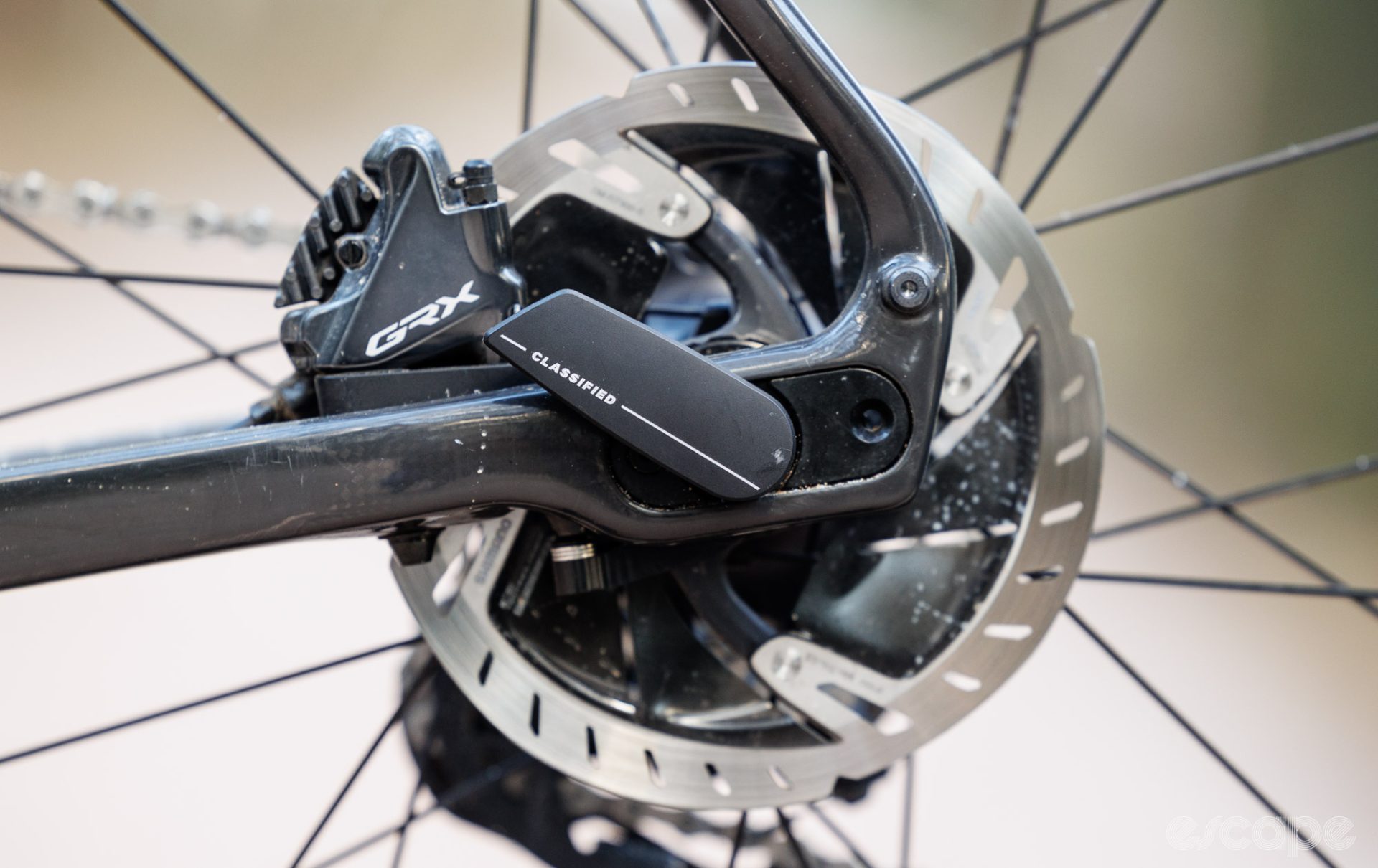
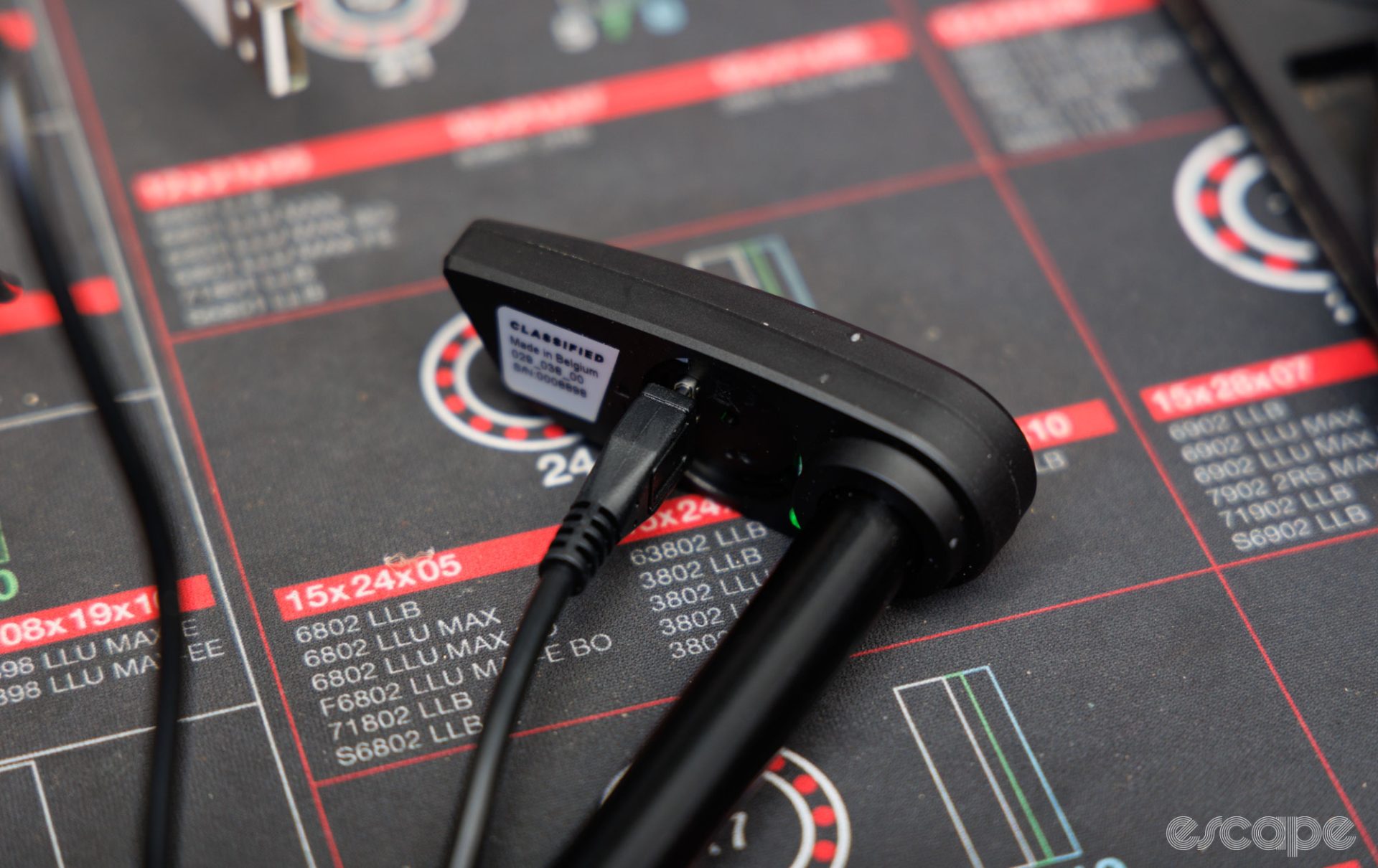
I also experienced some creaking when grinding in the lower .7 gear. Classified claim such noises are typically the result of poor thru-axle or torque arm setup, but after some step-by-step troubleshooting, I traced it to the spline interface between the cassette and hub. Classified officially recommend installing this component dry, but for me, grease seemed to shoo the noise away.
And lastly, there’s the fact that the hub isn’t user serviceable. Classified claims its system is maintenance-free and the company doesn’t even provide a recommended service interval. Such durability proved true during my extended test period, where it all still felt like new when the time came to send it back. However, big-mileage users will inevitably need new bearings or perhaps something even more detailed later down the road, and the answer is to send the Powershift unit back for repair.

Ok, so this is where Classified’s system is rather genius. All of the working components are combined into the Powershift unit that is merely bolted into the hub shell. In case of repair or warranty, Classified claims that its official dealers will simply swap your Powershift unit out for another, meaning you keep riding with no downtime. Failing having access to such a well-equipped dealer, you’d simply ship/swap the compact Powershift unit without having to worry about shipping a whole wheel. And failing all that, going back to a regular wheel and cassette is as simple as slipping it into place. It’s an elegant solution, but still, I’d like to see more in the way of self-repairability.
The hub of it
Classified’s Powershift hub does just about everything it claims to and it does it super well. The compatibility of the system is impressive. The dependable shifting and the speed at which it happens is wonderful. And the system does solve for some of the deserved animosity toward the front derailleur.
Classified has also answered for some fringe case purposes. For example, those who like to run oval-shaped chainrings can now do so without horribly-unreliable front shifting. Or those who have bought into a 1x-only gravel bike but prefer the tighter ratios of a 2x can find just that with Classified. Or perhaps you’re a singlespeeder at heart but want a stealthy bail-out gear with no external fluff that would ruin your cred, yep, the Classified could be the solution, I guess (and if you made yourself an appropriate cog).
Coming at it from a pure road racing point of view, my colleague Ronan Mc Laughlin appreciated what the Classified system offers. Ronan ran the system with a 60T front chainring for his endeavours at the Ras Tailteann stage race. There, he’d determined that it would be a very fast race with only rare and non-critical-moments where a small ring was needed.
“If I was to sum it up, I’d say the Powershift hub itself obviously doesn’t offer any performance gain, but the options it creates do in my mind,” said Ronan. “The 60t chainring was like a steam roller on descents, I was gapping the field, bridging to breakaways and taking KOMs on descents for the first time in my life (all the other aero gains I had made probably helped here, too).”
Previously, I had the Classified setup on a crit-style road bike running 1×12 SRAM Force AXS. In this form, the bike felt like a dedicated 1x machine, with all the cleanliness and simple shifting that such a setup affords. Meanwhile, the stealthy Classified allowed me to run a more tightly spaced cassette and still have a bail-out gear when the legs required. It was a good setup, but I find modern front shifting so good on road bikes that I’d sooner elect for a full Shimano or SRAM drivetrain before ponying up for a Classified-mix.
Most recently, I enjoyed having it on my gravel bike, but I haven’t shed a tear going back to a wide-range 1x setup. I prefer the simplicity of just having the one shifter to think about when riding off-road, and the bigger jumps in the cassette are often beneficial, too.
Ultimately, the lack of easy shifter integration remains the sticking point for both Ronan and I. This isn’t a cheap system, and if it were possible to plug-and-play the shifting with a non-bodged Shimano shifter or pair of SRAM AXS shifters, then the use case for Classified’s Powershift would broaden greatly. Until then, I think Classified’s Powershift will remain a relatively niche offering.
What did you think of this story?
